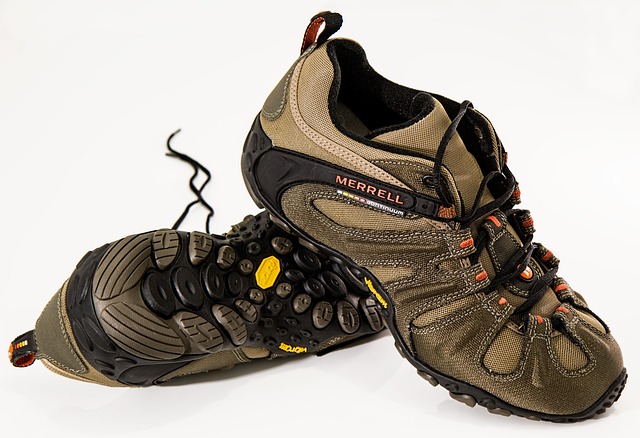Running offers health benefits but demands caution due to traffic, weather, and potential hazards. Essential runner safety tips include investing in reflective clothing and tracking technology, staying informed about local areas, and utilizing safe running gear. Advanced tech like GPS devices and apps enhance runner protection, while structured routines and visible environments boost personal safety for runners. Proper stretching, appropriate gear, and listening to the body prevent injuries; rest days are vital for recovery.
Running is a fantastic way to stay fit, but it’s crucial to prioritize runner safety tips to avoid common dangers. This article equips you with essential running protection tips and runner safety essentials. From understanding risks and common hazards on the trail to selecting safe running gear and leveraging technology solutions, these strategies ensure a secure running experience. Learn how to create running routines in environments that promote safety while minimizing injury risk.
- Understanding Risks and Common Dangers for Runners
- Essential Running Gear to Enhance Personal Safety
- Technology Solutions for Runner Safety
- Creating Safe Running Routines and Environments
- Additional Tips for Preventing Injuries and Assuring Protection
Understanding Risks and Common Dangers for Runners

Understanding Risks and Common Dangers for Runners
Running is an accessible and beloved form of exercise for many, but it’s crucial to acknowledge that it comes with its own set of risks and dangers. As runners, we often find ourselves in diverse environments, from bustling city streets to secluded trails, each presenting unique challenges. Among the most common hazards are traffic, especially when running on urban roads; unpredictable weather conditions like heavy rain or lightning; and the risk of tripping or slipping on uneven surfaces or loose debris. Additionally, lone runners may face potential threats such as aggressive dogs or strangers.
To enhance runner safety tips, essential running gear plays a vital role in protecting against these dangers. Wearing reflective clothing for visibility during low-light conditions is a smart choice. Moreover, investing in a reliable fitness tracker or a mobile app designed for runners can provide real-time tracking and protection advice, alerting you to potential risks in your surroundings. Always remember that staying informed about your local area and being prepared with the right safe running gear are key components of personal safety for runners.
Essential Running Gear to Enhance Personal Safety

Technology Solutions for Runner Safety

In today’s digital era, technology offers numerous solutions to enhance runner safety. Essential running gear now includes innovative devices designed to provide personal safety for runners. GPS trackers and smartwatches with built-in emergency features allow runners to share their locations in real-time with loved ones or access immediate assistance during a run. Additionally, reflective clothing and lights are crucial for night runners, ensuring they remain visible to drivers and fellow pedestrians.
Running protection advice extends beyond physical gear. Apps dedicated to runner safety offer additional layers of protection by providing emergency contact information, route tracking, and even automated incident alerts. Many of these apps also integrate with first-response services, enabling swift assistance in case of an accident or medical emergency. Embracing these technology solutions can significantly improve safe running gear and runner protection tips, making each run a more secure experience.
Creating Safe Running Routines and Environments

Creating Safe Running Routines and Environments
For runners, establishing a routine is key to enhancing personal safety. Sticking to familiar routes during early morning or dusk runs reduces potential hazards as you become more aware of your surroundings. Regularly evaluating and adjusting these paths ensures a dynamic yet secure environment. Investing in essential running gear like reflective clothing and lights becomes crucial when navigating less-traveled areas, ensuring visibility and deterring potential threats.
Additionally, choosing well-lit and populated routes adds layers of protection. Communicating your running plans with trusted friends or family members is another runner safety tip worth considering. This simple action provides a safety net, allowing someone else to anticipate and check in on your welfare. Remember that staying alert and aware of your surroundings at all times is fundamental to personal safety for runners, complementing these proactive measures.
Additional Tips for Preventing Injuries and Assuring Protection

Staying safe while running involves more than just choosing the right route and staying visible to traffic. Additional tips for preventing injuries and assuring protection include incorporating proper warm-up and cool-down stretches into your routine, as muscle strains and tears are common among runners who skip these essential steps. Wearing appropriate runner safety tips gear, such as well-cushioned shoes designed for your foot type and surface, can significantly reduce the risk of injuries like shin splints, plantar fasciitis, and knee problems.
Invest in essential running gear like a high-quality sports bra for women and compression shorts or tights for men to support your joints and muscles during runs. Reflectives and bright colors are crucial for running protection advice, especially when running in low-light conditions or at night, so consider incorporating reflective vests, shoes, or belts into your safe running gear kit. Lastly, listen to your body and don’t push through pain; rest days are vital for recovery and preventing overuse injuries.






